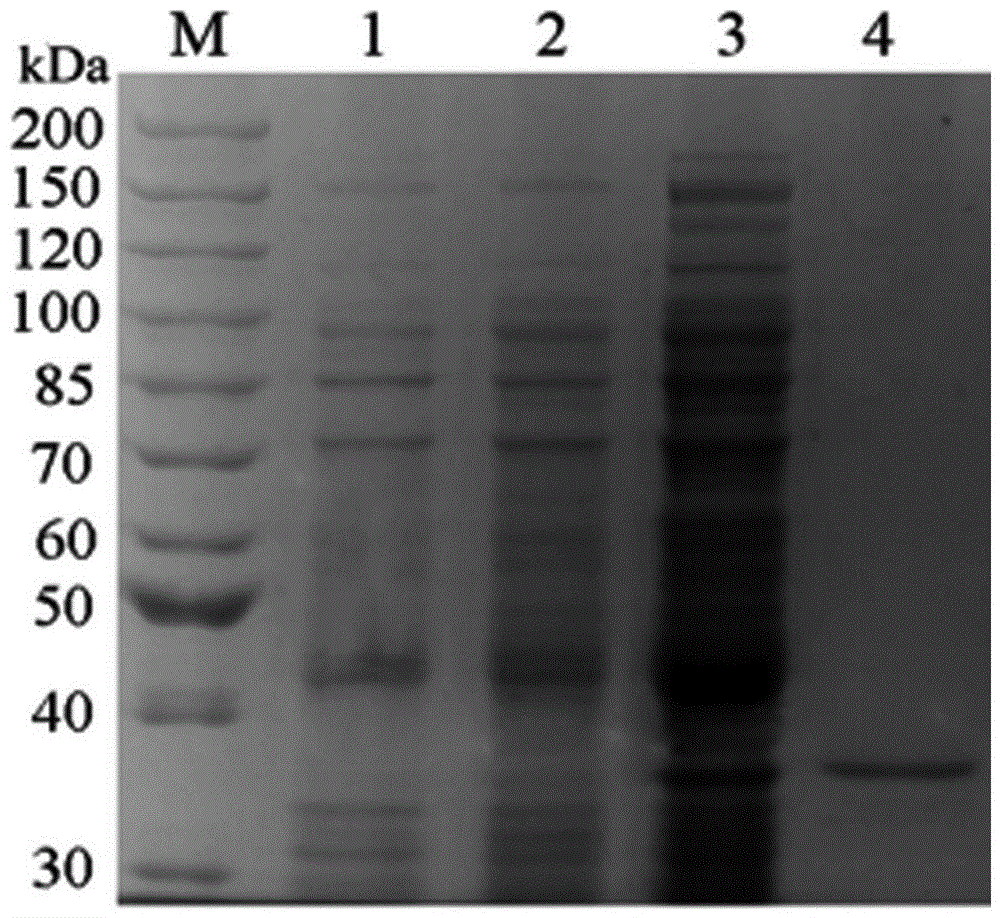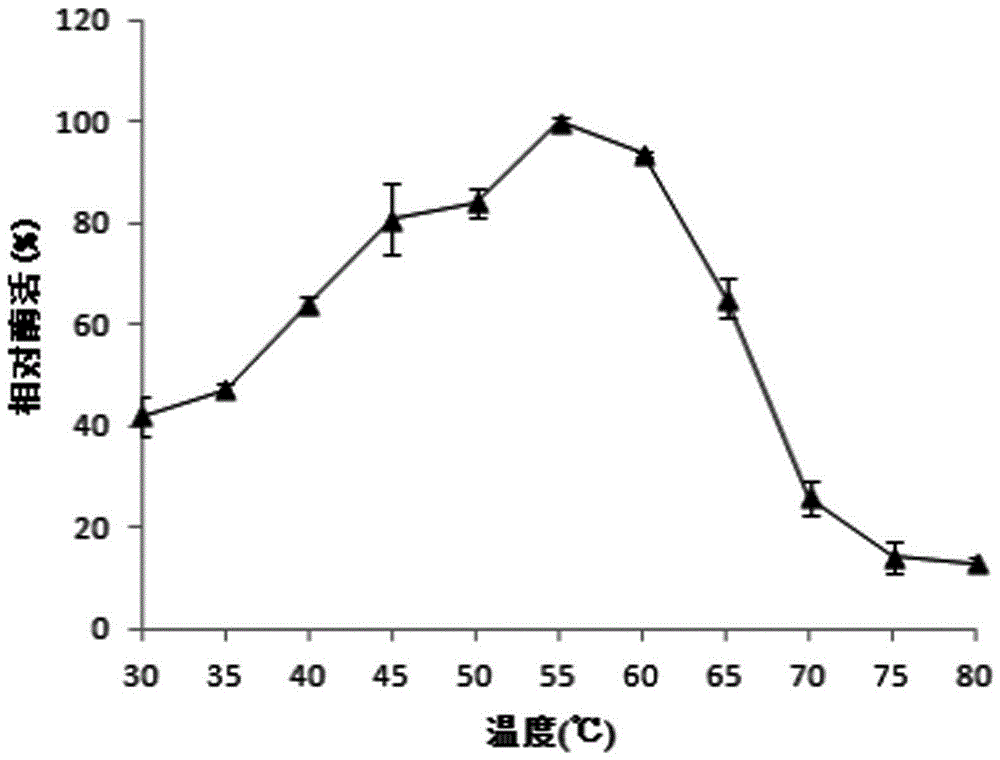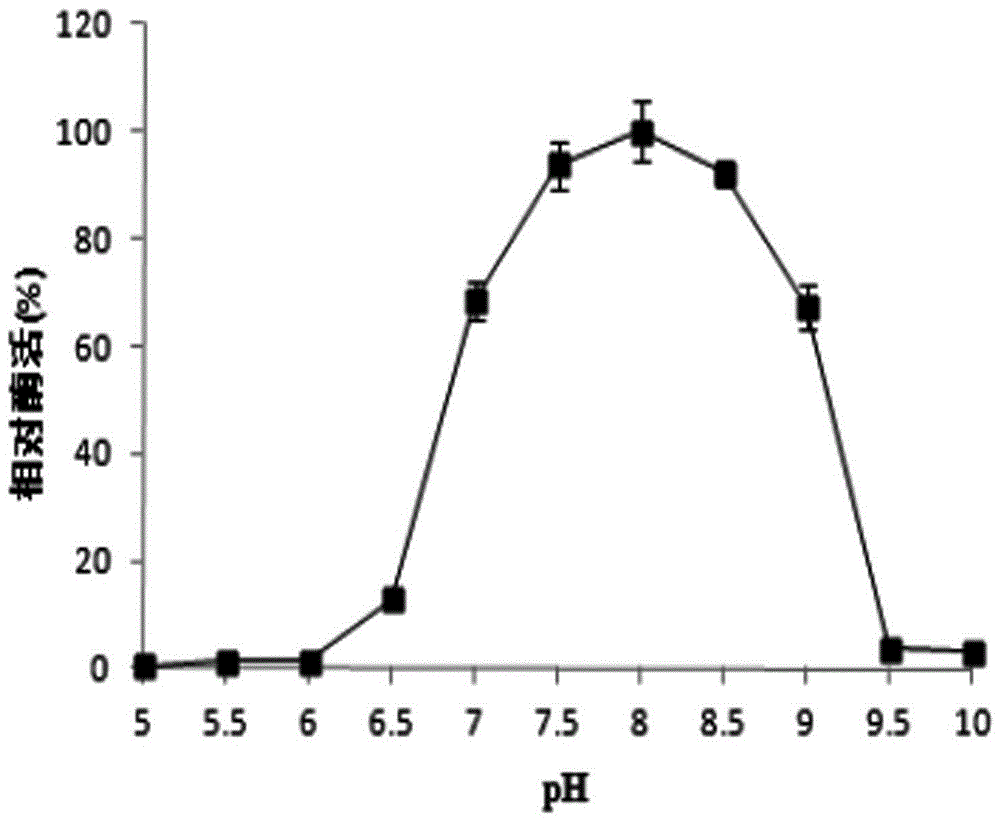Thermally stable mutant aromatic sulfatase and its gene and use
A base sulfate and aromatic technology, applied in the fields of genetic engineering and enzyme engineering, can solve the problems of affecting the removal efficiency of agar sulfate and low thermal stability of enzymes
- Summary
- Abstract
- Description
- Claims
- Application Information
AI Technical Summary
Problems solved by technology
Method used
Image
Examples
Embodiment 1
[0023] Embodiment 1: Thermostability improves the screening of mutant arylsulfatase
[0024] Using the recombinant plasmid (WT) containing the wild-type Pseudoalteromonas carrageenovora arylsulfatase gene as a template, perform error-prone PCR to amplify arylsulfatase:
[0025] Upstream primer (SEQ ID NO.3): 5'-CGC GGATCC TTTACGTTTAACGGCAGC-3′;
[0026] Downstream primer (SEQ ID NO.4): 5'-CCC AAGCTT GCGTTTTAGTTCGTAAC-3';
[0027] 50μL amplification system contains: 5μL 10× buffer, 0.2μmol / L primer, 0.5μmol / L dTTP, 0.5μmol / L dGTP, 0.1μmol / L dATP, 0.1μmol / L dCTP, 1U rTaq polymerase, 7mmol / L MgCl 2 and 2ng of recombinant plasmid template containing the wild-type enzyme gene. The PCR reaction conditions were: 95°C for 5 min; 30 cycles of 94°C for 1 min, 55°C for 45 sec, 72°C for 1 min; 72°C for 10 min. Recombinant expression plasmids were constructed by enzyme digestion cloning, that is, PCR products were double-digested with BamHI and HindIII, and the digested fragments w...
Embodiment 2
[0030] Example 2: Expression and purification of recombinant mutant arylsulfatase using recombinant expression strains
[0031] After culturing the recombinant expression strain overnight, transfer it to 250mL LB liquid medium (containing 50mg / mL kanamycin) at a volume ratio of 1:100, and culture it to OD at 37°C and 180r / min 600 When it reaches 0.6–0.8, add IPTG at a final concentration of 0.05mmol / L, and culture at 25°C and 180r / min for 10h. The cells were collected by centrifugation and resuspended in Buffer A (50mmol / L NaH 2 PO 4 , 300mmol / L sodium chloride, 15mmol / L imidazole, pH 8.0), ultrasonication was performed on ice. Centrifuge at 4°C, collect the supernatant, then perform Ni-NTA affinity chromatography, wash buffer (50mmol / L NaH 2 PO 4 , 300mmol / L sodium chloride, 30mmol / L imidazole, pH 8.0) after washing, use elution buffer (50mmol / L NaH 2 PO 4 , 300mmol / L sodium chloride, 250mmol / L imidazole, pH 8.0) elution, collect eluate. Detected by SDS-PAGE, the molec...
Embodiment 3
[0032] Embodiment 3: the detection of the activity of arylsulfatase
[0033] Add 20 μL enzyme solution (400ng enzyme) to 80 μL 20mmol / L p-NPS substrate solution. After incubating at 55°C for 10 min, 25 μL of NaOH (5 mol / L) was added to terminate the reaction, the volume was made up to 1 mL with distilled water, and the absorbance at 410 nm was measured. The activity of arylsulfatase is defined as the amount of enzyme required to catalyze the production of 1 μmoL p-nitrophenol (p-NP) per minute under the above conditions.
PUM
 Login to View More
Login to View More Abstract
Description
Claims
Application Information
 Login to View More
Login to View More - R&D
- Intellectual Property
- Life Sciences
- Materials
- Tech Scout
- Unparalleled Data Quality
- Higher Quality Content
- 60% Fewer Hallucinations
Browse by: Latest US Patents, China's latest patents, Technical Efficacy Thesaurus, Application Domain, Technology Topic, Popular Technical Reports.
© 2025 PatSnap. All rights reserved.Legal|Privacy policy|Modern Slavery Act Transparency Statement|Sitemap|About US| Contact US: help@patsnap.com



